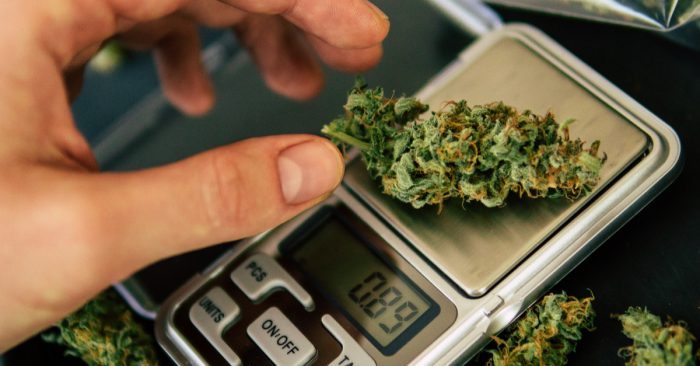Is there any link between EVALI vaping illness and COVID-19?
Not long ago there was a different view of vaping: Many saw it as a healthier alternative to smoking. However, this changed in late 2019, when hundreds landed in hospital with a mysterious vape illness. Also known as EVALI, (e-cigarette and Vaping Associated Lung Injury), the illness captured media attention for months in late 2019.
President Trump was quick to call for a ban on vaping, but it didn’t halt the spread. By early 2020, six months after the peak in September 2019, the CDC reported 2,807 hospitalizations and sixty-eight deaths.
Is There a Link Between Vaping Illness and COVID-19?
With the COVID-19 pandemic making the headlines throughout 2020, some postulated that cases of lung illness in late 2019 were actually early COVID-19 cases. The rumors emerged from various corners of the internet, but such theorists offered little in the way of scientific evidence to back up their claims. Incidentally, the CDC, who led the fight in taming the vape illness outbreak, did not claim a link between the two.
At the time of writing, the underlying cause of COVID-19 and vaping illness are clearly very different. One is a viral infection. The other is the result of chemical damage to lung tissue.
However, the question of whether vapers are at increased risk of contracting COVID-19 is not so clear. Neither vaping nor COVID-19 has been around long enough for science to fully understand them and their effects.
The Cause of Vape Illness
CDC investigators identified exposure to chemicals in vaping products as being responsible for the vape illness outbreak. While the CDC did not rule out other chemicals as possible causes, the chief suspect was the Vitamin E acetate present in many THC-based vaping products.
Unlike COVID-19, the evidence does not suggest that vaping illness was in any way infectious.

Vape Illness Declines as COVID-19 Cases Rise
Rates of vaping illness peaked in September 2019. This alone banishes any notions that COVID-19 and EVALI are the same thing.
According to the CDC, the reasons for the decline are multifactorial. They are most likely related to several factors, including:
- Law enforcement actions related to illicit products.
- The removal of vitamin E acetate from products.
- Increased public awareness of the risks associated with vaping products containing THC.
The Scientific Data On Vape Illness Symptoms
A study published in the New England Journal of Medicine (2019), reviewed lung biopsies of seventeen patients who all had a history of vaping.[1]Visser, W. F., Klerx, W. N., Cremers, H., Ramlal, R., Schwillens, P. L., & Talhout, R. (2019). The Health Risks of Electronic Cigarette Use to Bystanders. International journal of environmental … Continue reading
All were clinically suspected of having a vape illness. Seventy-one percent of those in the study admitted to vaping with either cannabis flower or cannabis oil.
Eleven of those in the study met the criteria for a lung-related vape illness, while six more met the criteria for a probable designation. Of those afflicted with a vape illness, researchers reported that, “histopathological findings showed patterns of acute lung injury, including acute fibrinous pneumonitis, diffuse alveolar damage, or organizing pneumonia, usually bronchiolocentric and accompanied by bronchiolitis.”

The Symptoms of Vape Illness and COVID-19
Common early symptoms of COVID-19 include fever, coughing, fatigue, chest pains, shortness of breath, nausea, and diarrhea. The CDC advises anyone with such or similar symptoms to contact a healthcare provider immediately.
As defined by the CDC, the most common symptoms of vape illness differ only slightly. They include:
- Respiratory symptoms, including cough, shortness of breath, or chest pain
- Gastrointestinal symptoms, including nausea, vomiting, stomach pain, or diarrhea
- Nonspecific constitutional symptoms, like fever, chills, or weight loss
To help prevent vaping illness, the CDC have also recommended refraining from using e-cigarettes and all vaping products, particularly those containing THC.
Should People Stop Vaping to Combat COVID-19?
It’s early days. So far, no scientific studies link vaping to an increased risk of contracting or dealing with COVID-19.
However, preliminary data suggest that young adults now represent a high percentage of US hospitalizations for COVID-19. For example, half of those in intensive care during March were actually younger than 65. This group does represent the section of the population most widely known for vaping.[2]Butt YM, Smith ML,Tazelaar HD, et al. Pathology of Vaping-Associated Lung Injury. N Engl J Med. 2019; 381: 1780-1781. https://doi.org/10.1093/ajcp/aqaa062.
Vapers should be aware that the National Institute on Drug Abuse has published information suggesting that vaping may harm lung health, as it “diminishes the ability to respond to infection.” The article warns that those who vape may consequently be at increased risk for COVID-19 or other lung infections.
On the other side, the CDC has compiled a list of those most at risk for severe illness as it relates to COVID-19. While smokers are in the vulnerable group, there was no mention of vapers being at increased risk of COVID-19. Still, in times when information and guidelines are changing hourly, this may change at any time.
Is Secondhand Vape an Issue For Vaping Illness?
A 2019 Dutch study investigated the risks that electronic cigarettes pose to bystanders. The study was published in The International Journal of Environmental Research and Public Health, and carried out at carried out at Holland’s National Institute for Public Health and the Environment. The study concluded that while health risks most certainly do exist, they were mild.
The main findings from the study noted that “bystanders may experience irritation of the respiratory tract as a result of exposure to propylene glycol and glycerol” — the synthetic liquids that form the solutions in many vape cartridges.
In addition, the study also concludes that “If nicotine-containing e-liquid is used, systemic effects of nicotine can occur, including palpitations and an increase of the systolic blood pressure.” Unfortunately, the study goes on to say that “due to the presence of TSNAs in some liquids, an increased risk of tumors cannot be excluded.”
Reference was also made in the study to the lack of toxicological data currently available regarding many common flavor ingredients. The researchers in the study noted that “while acute health effects experienced by e-cigarette users have been observed, this might be attributable to specific flavor ingredients [and that] long-term effects will only become apparent after several years.”
The Future of Vaping
Dry-herb vaporizers do not present the same risks as cartridge vapes. Further, those medicating with cannabis can also do so via other methods that don’t involve combustion. Whether edibles, tinctures, oils, or patches, there are an abundance of healthier ways to medicate without the unintended consequences of lung damage.
References





